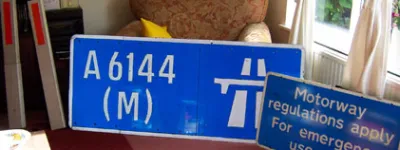The final report of the Worboys Committee detailed a set of traffic signs that was an enormous improvement over its predecessor. It received widespread congratulations from the press, industry and motorists themselves. Britain now, at last, conformed to European standards and the Vienna Convention, and made full use of the technology now available to make large, detailed and colourful signs.
For the first time it was possible, without having to simply write the message in capital letters on a plain black-and-white sign, to warn drivers of a cul-de-sac, to instruct them to keep left and to prevent them from parking in a given location. A grasp of English was no longer required to understand the symbol for a narrowing road, and the urgency of having to STOP was no longer lost in the wordy instruction to "halt at major road ahead".
A major review of the direction signing system conducted in the late 1980s found effectively no problems with the Worboys system - it could only recommend the introduction of white-on-brown tourist signing and a few other minor changes. Worboys was a world leader in good signing practice.
Since its adoption, the Transport font has been called the handwriting of Britain. It has been adopted or adapted for Spanish, Icelandic, Portuguese (who also use the Motorway font) and Italian road signs, and from the Worboys report, everything from colour coding and design rules to exact pictogram designs have been borrowed and put into use somewhere else. The result of many years of experimentation and careful planning and design is a system of signposting that remains essentially the same forty years later, and is still met with much acclaim.
